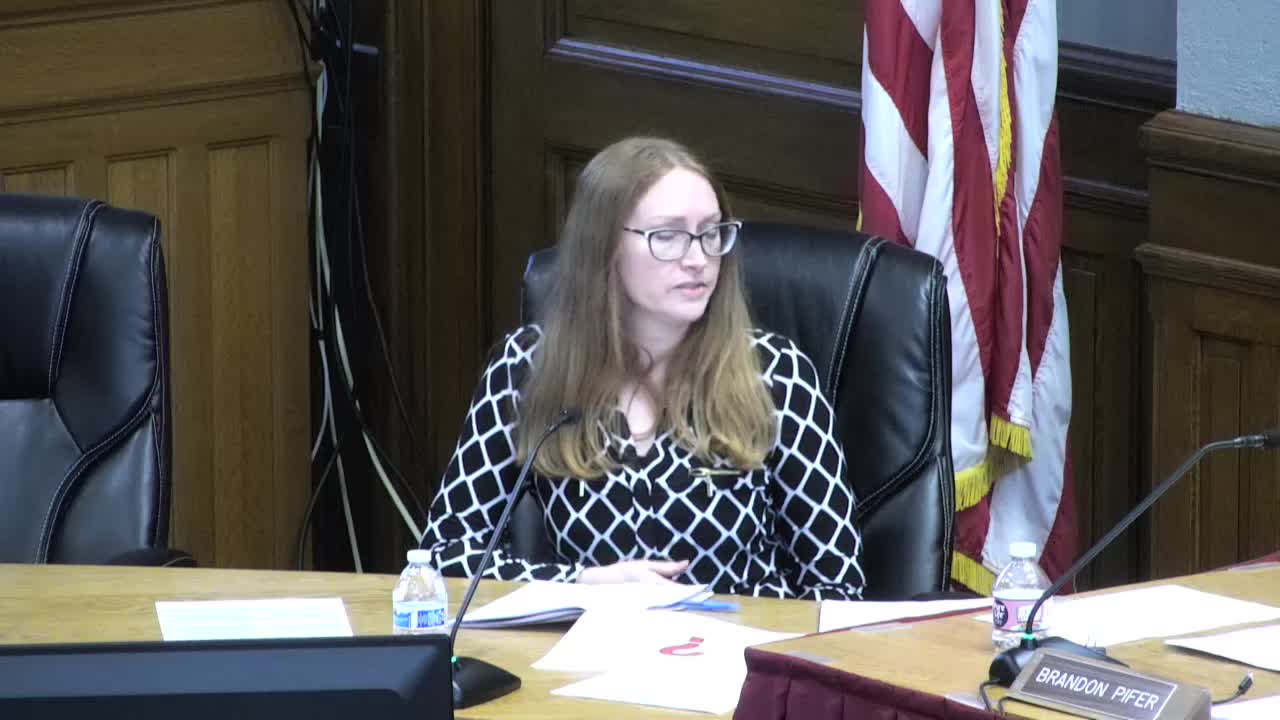Commissioner Carrel proposes changes to housing amenity regulations for affordable development
September 16, 2025 | Winchester City, Frederick County, Virginia
This article was created by AI summarizing key points discussed. AI makes mistakes, so for full details and context, please refer to the video of the full meeting. Please report any errors so we can fix them. Report an error »

During the recent Winchester Planning Commission meeting, a significant discussion emerged regarding the regulations surrounding amenities in residential buildings, particularly those with fewer units. Commissioner Carrel proposed a change to allow expansions without a cap, which sparked a broader conversation about the impact of specific amenity requirements on affordable housing.
One of the key points raised was the concern that current regulations, which mandate a certain amount of floor space for amenities in small buildings, could hinder the development of affordable housing. A commissioner expressed surprise that these regulations remained unchanged from previous discussions, emphasizing that such requirements could be burdensome for developers and ultimately lead to higher rents for tenants.
The commissioner argued that if a building is designed for residents who desire amenities, those features will naturally be included without mandatory regulations. They highlighted that imposing specific amenity requirements on smaller buildings could result in unnecessary costs that would be passed on to renters, making housing less affordable.
Additionally, the discussion touched on the idea that living in a downtown area can itself be considered an amenity, suggesting that the focus should be on increasing housing availability rather than enforcing rigid amenity standards. The commissioner expressed a desire for more flexibility in regulations, particularly for smaller developments, to better align with the community's needs for affordable housing.
The meeting also noted the addition of options for outdoor amenities with permeable surfaces, which was seen as a positive step. However, the ongoing debate about the necessity of specific amenity requirements indicates a need for further evaluation of how such regulations affect housing development and affordability in Winchester.
As the Planning Commission continues to refine its approach, the outcomes of these discussions will play a crucial role in shaping the future of residential development in the community, balancing the need for amenities with the pressing demand for affordable housing solutions.
One of the key points raised was the concern that current regulations, which mandate a certain amount of floor space for amenities in small buildings, could hinder the development of affordable housing. A commissioner expressed surprise that these regulations remained unchanged from previous discussions, emphasizing that such requirements could be burdensome for developers and ultimately lead to higher rents for tenants.
The commissioner argued that if a building is designed for residents who desire amenities, those features will naturally be included without mandatory regulations. They highlighted that imposing specific amenity requirements on smaller buildings could result in unnecessary costs that would be passed on to renters, making housing less affordable.
Additionally, the discussion touched on the idea that living in a downtown area can itself be considered an amenity, suggesting that the focus should be on increasing housing availability rather than enforcing rigid amenity standards. The commissioner expressed a desire for more flexibility in regulations, particularly for smaller developments, to better align with the community's needs for affordable housing.
The meeting also noted the addition of options for outdoor amenities with permeable surfaces, which was seen as a positive step. However, the ongoing debate about the necessity of specific amenity requirements indicates a need for further evaluation of how such regulations affect housing development and affordability in Winchester.
As the Planning Commission continues to refine its approach, the outcomes of these discussions will play a crucial role in shaping the future of residential development in the community, balancing the need for amenities with the pressing demand for affordable housing solutions.
View full meeting
This article is based on a recent meeting—watch the full video and explore the complete transcript for deeper insights into the discussion.
View full meeting
